
Where to Charter in the Caribbean?
People often ask us where they ought to charter when going to the Caribbean for the first time. We usually recommend the British Virgins Islands, as it is to bareboat chartering what Vegas is to gambling. After all, it’s got the greatest number and variety of boats, lots of islands very close to each other, protected waters, and nearly all the country’s businesses are geared to bareboat chartering. You can go at any time of year, although late spring has the best weather.
If you and your group are more experienced and adventurous sailors, we recommend the St. Barth / St. Martin area, specifically between the St. Barth Bucket, which is in late March, and the Voiles de St. Barth, which is in early April. Indeed, if you and your friends have had a good year, we recommend chartering a boat out of St. Martin just before the start of the Bucket and all the way through the Voiles. After all, it just doesn’t get any better than that for experienced sailors.
It seems like just yesterday that the spectacular 47-megayacht Bucket ended and the 1,500 sailors headed home to the far reaches of the globe. After catching our breath for what seemed like just a few hours, we were shocked to bump into Ken and Kerry Keefe of KKMI, as their presence could only mean one thing: the St. Barth Voiles was almost upon us. After all, Ken runs the very successful Vesper TP 52 program, and was back to help defend their win last year.
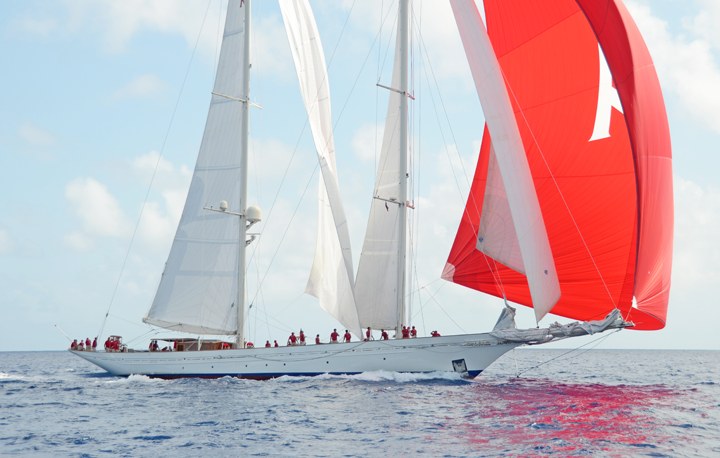
© Latitude 38 Media, LLC
The Bucket and the Voiles are two very different events. In the former, your boat has to be over 100 feet in length, have a Steinway and a hot tub, and serve only the finest champagne. And you better not blanch when Nikki Beach charges you 150 euro — about $225 U.S. — for the afternoon’s use of a bed on the beach. The captain of one of the bigger boats said the budget for the three days of racing was $80,000, while a more typical figure might have been $30,000. Some boats will be doing the Voiles for a fraction of that.
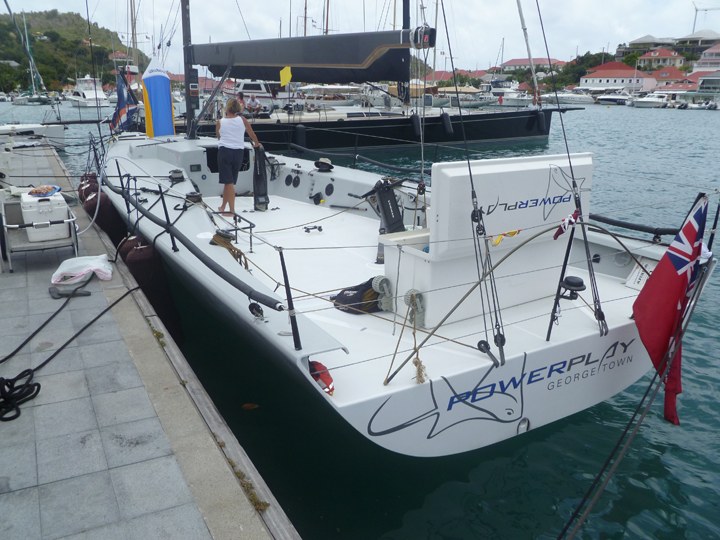
© Latitude 38 Media, LLC
There will be a couple of 100-ft boats in the Voiles, too, including Rambler 100, which flipped during last year’s Fastnet Race, darn near killing San Diego’s Peter Isler and the rest of the crew. But most boats are smaller. In addition to a number of TP52s, there are a couple of full on racing trimarans, Phaedo, the fastest Gunboat 66 cat of them all, and about 60 other boats. As for the parties, the docks are going to rock again, from the Charles de Gaulle Quay to the Baz Bar, with everyone welcome. Hey, it’s not too late to fly down!
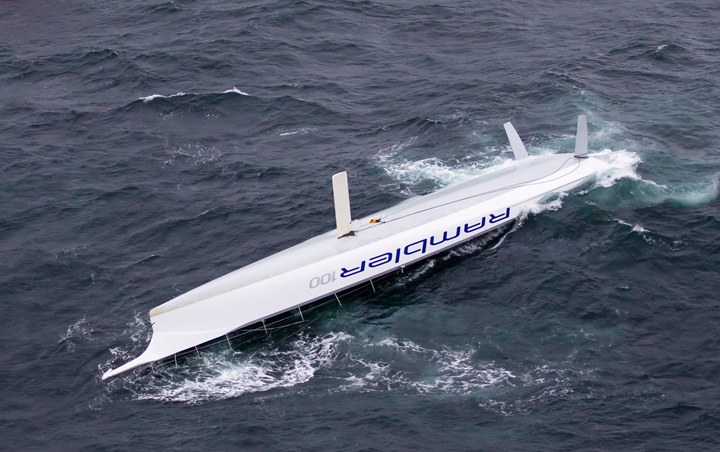
Between the Bucket and the Voiles, we’ve been fooling around with the Olson 30 La Gamelle. Getting her from California to St. Barth via Florida and Martinique was the hard and expensive part. Now we’re doing some of the easy jobs, such as permanently removing the outboard, unnecessary blocks, electrical wiring, foul weather gear and all the other junk — some of it expensive — that accumulates on even the smallest of boats.
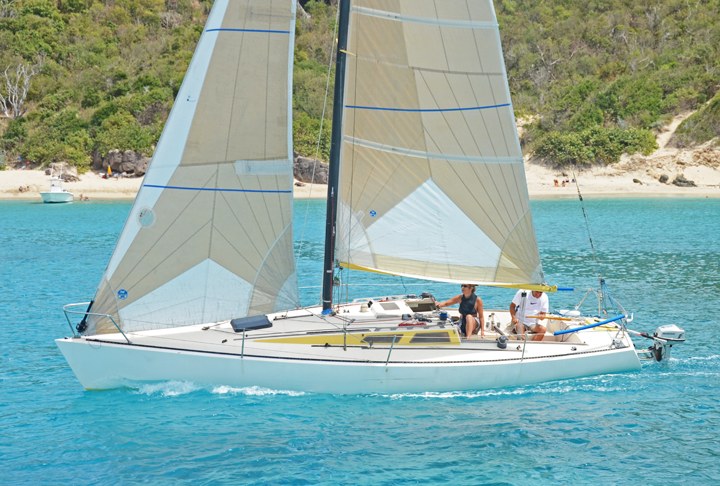
But we’ve got a problem that maybe you Olson 30 sailors can help us with. What kind of ladder — or other device — do you use to climb aboard from the water? Back in the day — way back in the day — we used to muscle ourselves aboard. But no longer. Any suggestions? After all, we dream about being able to swim out to La Gamelle on the hook at Baie St. Jean or Shell Beach, climb aboard, set sail, and enjoy a little sunset sailing. Yeah, we could go out to the boat and climb aboard using the dinghy, but that wouldn’t be as cool, would it?
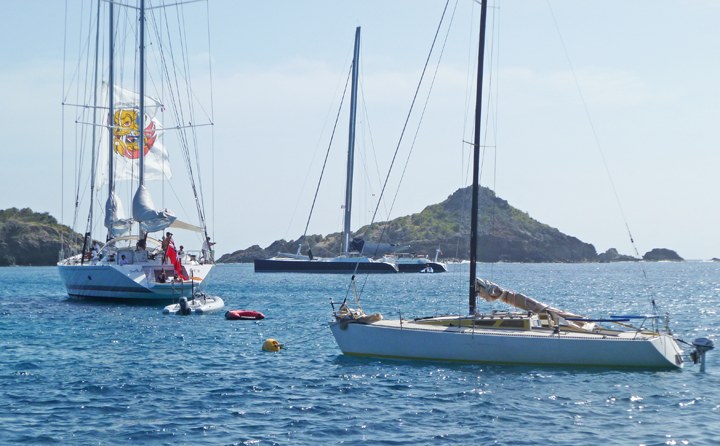
© Latitude 38 Media, LLC
Last night the anchorage off Fort Oscar got pretty sloppy, and taught us a lesson about the difference between monohulls and multihulls. We’d been keeping La Gamelle streaming behind ‘ti Profligate for the previous several days to have her nearby so we can work on her, and have had no problems. But last night the seas got really sloppy. Shortly after hopping into bed, we were surprised to hear the bow of La Gamelle slam into the back of ‘ti Profligate. What the . . . ?! We spent about the next hour watching the routine. You know how small boat monohull sailors can propel their boats forward, even with the sails down, by rocking their boats from side to side? Well, the slop was rocking La Gamelle side to side, with the result that she kept getting propelled toward the back of ‘ti Profligate at about one knot.
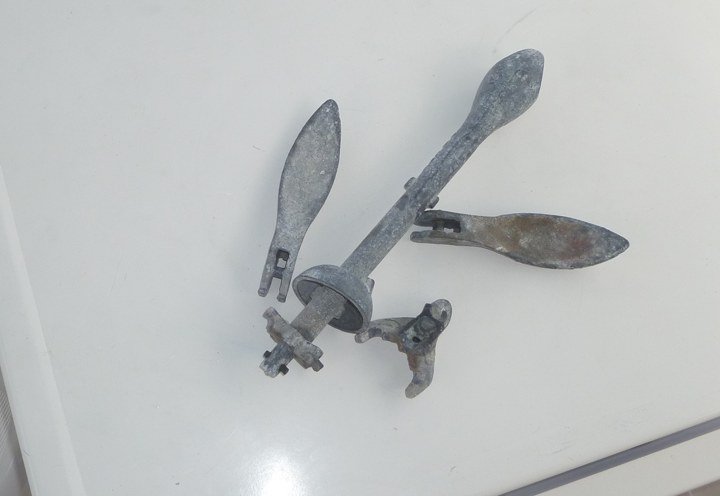
© Latitude 38 Media, LLC
We tried to solve the problem by rearranging the streaming line, tying a bucket to the transom of La Gamelle, and doing several other things. All were in vain. The only thing that worked was setting ‘ti Profligate‘s dinghy anchor off the back of La Gamelle. The anchor held to solve the problem, but just barely — when we got up this morning and raised the dinghy anchor, the flukes came apart in our hands. The lesson is, we suppose, that even anchors need replacing from time to time. And that if you’ve got to get wet to solve boat problems, it’s best if the water is warm.
